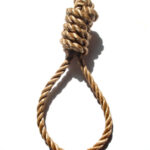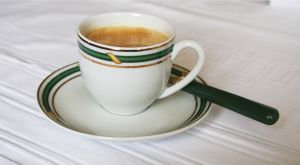Trial by jury is so ingrained into the consciousness of Americans today that a jurisprudence system based on anything else is virtually inconceivable. At the same time, however, most Americans’ knowledge of the system of judgment based on a collection of twelve of one’s peers is limited to what they glean from watching one of the sixty-four reruns of Law & Order that air every day. The jury system has undergone various transformations over the century, but for the most part it can be traced back to one single day in England in the year 1215. Although it may border on the incomprehensible, the fact remains that the concept of twelve strangers deciding the fate of another stranger dates back to a document formed at the height of the power of British monarchy.
On June 15, 1215 rebellious barons forced King John of England to affix his seal to a list of freedoms and liberties. However, these rights were never intended to be enjoyed by the masses as some sort of democratic ideal; the charter agreed to under pressure by King John was a feudal document and therefore was only meant to provide protection to a small and exclusive group of those at the top of the feudal system. Despite this limited targeting of rights, it is the Magna Carta from which the term “a jury of one’s peers” springs and not the US Constitution or the Declaration of Independence. In practice, however, this was done to reduce the powers of the king to restrict him from creating laws at his whim. In addition, in local cases where laws were broken the result typically tended to be violent resolutions and the clauses in the Magna Carta were designed to bring a means whereby disputes could be solved equitably.
Despite this movement forward, the jury as it is known today was a long slow process during which time the members of the jury transformed into more of a body of expert witnesses who could bring some intellectual insight to the case at hand rather than being the arbiters of justice. In fact, it would not be until the 1600s that the jury came to resemble anything like what it is today. Over time the theoretical idea of a jury made up of one’s peers moved out of that realm and into the real.
Many complaints are made about how a jury of one’s peers rarely translates into exactly that even today. Still, the average jury composition today is far preferable to those of even the relatively recent past. Consider the most famous movie ever made about jury deliberations. The title 12 Angry Men doesn’t really do justice; it should be called 12 Angry White Men. Sadly, the utter lack of diversity on that cinematic jury is very true to life; for most of America’s history a jury of one’s peers was only truly apt if you were a white male. The result, of course, is a sad history of innocent African-Americans being convicted of crimes they didn’t commit. The passage of the Jury Selection and Service Act in 1968 went a long way toward reforming the process, mandating that the pool of jury names be selected from registered voters and that names be randomly selected. Since the passage of that act individual states have moved to enact various strategies to ensure a more equitable formation that comes closer to reflecting the diversity of the country at large.
Members of the jury come from all walks of life, although the chances of a person having their fate deliberated by someone famous is small to nil. At the same time, however, a poor person can find his fate in the hands of a millionaire just as easily as a millionaire can find his fate being put into the hands of a minimum wage worker. American citizens can only serve on juries in those states in which they are official residents. In addition other exemptions include not being a US citizen and not being able to understand the English language, as well as certain physical disabilities such as blindness, deafness, physical infirmities and age. Obviously, those under the age of eighteen are not allowed to serve on a jury, but elderly people are also typically allowed to be exempt. Those with pressing occupational excuses typically tend to receive exemptions as well. For instance, doctors and nurses rarely serve on juries lasting more than a day. Clergymen also usually receive exemptions.
The function of the jury in the American judicial system is to attend the trial and deliberate on the evidence in order to provide a unanimous verdict. The point of a jury system is that it is supposed to provide a fair and unbiased examination of the evidence; taking away the power of the judge who may be prejudicial in his decision. In addition, many view the use of jury as an important defense against unchecked power in the hands of the state. When the state controls the delivery and judgment of evidence the possibility for abuse increase exponentially. Because the jury has such power, a key component of the system is for lawyers to try to find jurors whom they believe will be likely to believe their side. Since so many trials are based on witnesses and evidence that provide no solid basis for determining guilt or innocence, a fair amount of that determination is based on juror psychology. And that is why many potential jurors are dismissed with peremptory challenges in the voir dire process. During the voir dire, lawyers can dismiss potential jurors for a variety of reasons, but they also have the power to dismiss a potential juror for absolutely no reason at all. While this sounds like a magnificent abuse of power, it comes with one very important caveat: the number of peremptory challenges varies from state to state, but typically attorneys can utilize it no more than six times.
Perhaps the single most important aspect of a jury verdict is that it must be unanimous, regardless of what the verdict is. In other words, to find a person guilty all twelve members of the jury must agree on the defendant’s guilt. Likewise, before a defendant is completely freed of all of liabilities to the charges against him, he must be found not guilty by all twelve members. Should a unanimous decision not be made, the term used to describe that circumstance is a hung jury. A hung jury does not mean that the defendant is either guilty or innocent; the decision on whether to try the person again or not falls into the hands of the district attorney.
The very concept of trial by jury has been put on trial many times throughout the history of the US, many times wending its way through the system all the way to the Supreme Court. One of the earliest Supreme Court cases involving trial juries was Strauder v. West Virginia dealt with the subject of racial exclusion from juries. Duncan v. Louisiana was a landmark case involving trial by jury, deciding that the Sixth and Fourteenth Amendments to the Constitution did guarantee the right to jury trial in state prosecutions involving sentences as long as two years.
The right to a trial by jury is one of the Constitutional foundations of American law. So important was the concept of trial overseen by a jury of one’s peers that it was included among the Bill of Rights. The Sixth Amendment is a codification of the rights to be granted to individuals in case of criminal prosecutions in federal courts. With the ratification of the Fourteenth Amendment, these rights were made applicable at the state level. The trial by jury is a bedrock foundation for jurisprudence in the US. The founding fathers were heavily influence by the Magna Carta in the development of the constitutional law of the land and viewed their own revolutionary break with King George III as analogous in some ways to the revolutionary spirit that inspired the Magna Carta in the first place. It is incredibly difficult to imagine the American legal system operating under any other method.
Despite this fundamental commitment to the jury system in America, however, much of the rest of world has not been so quick to adopt the system. Even in the birthplace of the trial jury things are not quite done as they are in America. For instance, though England and America both share the 12 person jury concept there has recently been a change that allows for the possibility of a non-unanimous verdict. At the discretion of the judge, if deliberations go past a certain point he can instruct the jury that a verdict can be brought based on a 10-2 vote. In other countries there are stipulations as to which kinds of crimes are tried by jury. It may come as a surprise to many Americans to find that people of other nations actually frown upon putting their fate into the hands of their peers. The very idea of letting an uneducated person control their destiny is absolute anathema.
The jury system in American is constantly evolving. Whether as a result of lawsuit reaching the Supreme Court or public opinion resulting in an outcry for reform, the best adjective to use in describing the jury system in America is fluid. The system began as a male-only concept and has changed significantly throughout the years. No jury is ever really a true representation of one’s peers and that’s probably for the best. It would hardly be fair if rich white men were only tried by other rich white men. However, in recent years many high-profile cases have led to suspicion that the system isn’t quite as near to perfected as most American would like to believe.
Although the US court system has a vicious history of jury nullification in which all-white juries convicted blacks of crimes they not only were innocent of committing, but which the jury members knew they were innocent of committing, it several infamous cases during the 1990s that led to scrutiny about the very fairness of the jury system in America today.
The stunning acquittal of the defendants in the Rodney King case-a case in which video of the crime seen by all of America instantly branded the defendants guilty in the minds of most-and the shockingly quick and-to many-bewildering acquittal of O.J. Simpson both led to an outcry for a re-examination the jury selection process. At issue were two subjects directly related to jury fairness: How can there really be any pretension toward finding twelve jurors not already predisposed toward a verdict in this age of immediate media coverage; and should trials of infamous and well-covered crimes necessarily be tried in the jurisdiction in which the crimes took place.
Another issue at the forefront of the jury system in America is the idea of jury unanimity. Many high-profile trials that ended in hung juries were discovered to have been nearly unanimous with only one or two holdouts. Subsequently there have been some efforts made to follow England’s move toward allowing non-unanimous verdicts. At present this concept has had no real legislative pressure behind it and typically only becomes an issue when it has been discovered that a defendant generally found guilty in the public’s eye receives the benefit of a hung jury.
The American trial by jury system has been in place since the country’s inception and its precursors date back for centuries. Whatever flaws one may find in it, and surely it is not a perfect system, the alternative seems far worse. Most Americans would not be willing to give up the system as it is, though certainly everyone probably has their own idea on how to better it. Despite not being perfect, clearly no one American is ready to give serious thought to dumping it and starting over from scratch.


